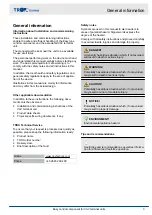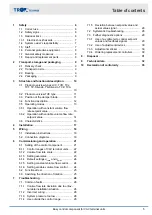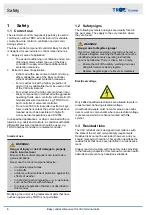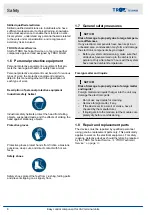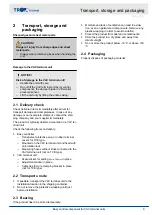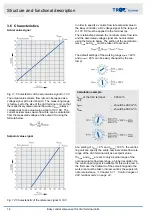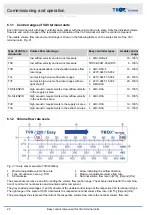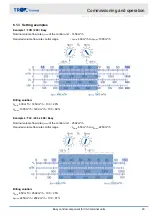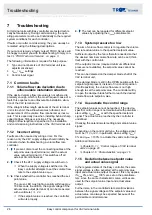
3.6 Characteristics
Actual value signal
Fig. 11: Characteristic of the actual value signal 0–10 V
The actual value volume flow rate can be tapped as a
voltage signal at the terminal (U). The measuring range
is factory-set to the size of the VAV terminal unit, so that
the respectively rated nominal flow rate (q
vnom
) always
corresponds to an actual value signal of 10 V DC. The
current actual value volume flow rate can be calculated
from the measured voltage at the output (U) using the
formula below.
Setpoint value signal
Fig. 12: Characteristic of the reference signal 0–10 V
In order to specify a volume flow rate setpoint value to
the Easy controller, a DC voltage signal in the range of
0–10 V DC must be applied to the terminal (w).
The relationship between the nominal volume flow rate
and the associated voltage signal can be calculated
using the formula below. The setting of the potentiome-
ters q
vmin
and q
vmax
must be taken into account.
The default settings of the working range q
vmin
= 40 %
and q
vmax
= 80 % can be easily changed by the cus-
tomer.
Calculation example:
q
vnom
of the VAV terminal
unit:
- 800 m³/h
q
vmin
- should be 200 m³/h
q
vmax
- should be 600 m³/h
At a setting of q
vmin
= 0 % and q
vmax
= 100 %, the control-
ling unit can specify the entire nominal volume flow rate
range of the VAV terminal unit as a setpoint value.
If q
vmin
and q
vmax
are set to only a partial range of the
nominal volume flow rate range, a higher resolution for
the control input signal is available for this work area. In
the first case, the limitation of the setpoint signal to the
work area must be taken into account by the superordi-
nate rule instance,
Chapter 6.1.1 ‘Control ranges of
VAV terminal units’ on page 22
Structure and functional description
Characteristics
Easy control component for VAV terminal units
16


